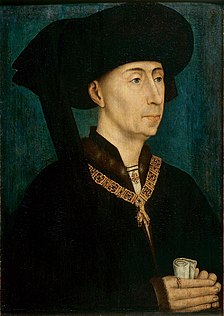
Simon IVde Montfort, also known as Simon de Montfort the Elder, was a French nobleman and soldier who took part in the Fourth Crusade (1202–1204) and was a prominent leader of the Albigensian Crusade. He died at the Siege of Toulouse in 1218. He was lord of Montfort-l'Amaury in France and the 5th Earl of Leicester in England.
Simon de Montfort often refers to:
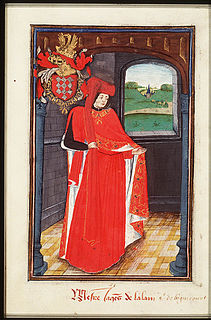
Jacques de Lalaing (1421–1453), perhaps the most renowned knight of Burgundy in the 15th century, was reportedly one of the best medieval tournament fighters of all time. A Walloon knight, he began his military career in the service of Adolph I, Duke of Cleves, but was quickly noticed by Philip III Duke of Burgundy by whom he was knighted and who he went on to serve. Jacques, known as the "Bon Chevalier" due to his military prowess in tournaments and battles, became the most famous Burgundian knight of his time, and was well-known throughout Europe as one of the best medieval tournament fighters. Jacques was inducted into the prestigious Burgundian chivalric order, the Order of the Golden Fleece, in 1451. Jacques' deeds in tournaments and battles were recorded in the Livre des Faits de Jacques Lalaing attributed mainly to the Burgundian chroniclers Jean Le Fevre de Saint-Remy, Georges Chastellain, and the herald Charolais. Throughout his life, Jacques was entrusted by the Duke of Burgundy to serve in delegations to the King of France and the Pope, as well as with the suppression of the Revolt of Ghent in 1453.
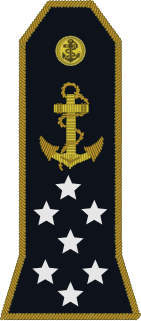
Admiral of France is a French title of honour. It is the naval equivalent of Marshal of France and was one of the Great Officers of the Crown of France.

Othon de la Roche, also Otho de la Roche, was a Burgundian nobleman of the De la Roche family from La Roche-sur-l'Ognon. He joined the Fourth Crusade and became the first Frankish Lord of Athens in 1204. In addition to Athens, he acquired Thebes by around 1211.

The Battle of Dahlen was fought on April 23, 1568, between a Dutch rebel army led by Jean de Montigny, Lord of Villers, and a Spanish army commanded by Sancho Dávila y Daza. As a part of William of Orange's planned invasion, the Dutch rebels were trying to conquer the town of Roermond when the arrival of the Spanish force compelled them to withdraw. Dávila pursued the retreating force and inflicted a defeat upon Villers near the small town of Dahlen. The survivors of this encounter sought refuge under the walls of Dahlen, where the Spanish infantry finally defeated them. This battle is sometimes considered the official start of the Eighty Years' War.
Guy I de la Roche (1205–1263) was the Duke of Athens, the son and successor of the first duke Othon. After the conquest of Thebes, Othon gave half the city in lordship to Guy.
Guy de Montfort was the younger son of Simon III de Montfort and Amicia, sister of Robert FitzPernel, Earl of Leicester.
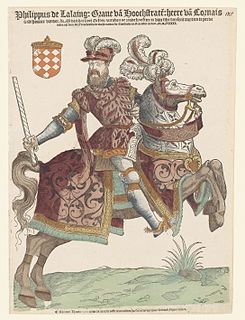
Philip de Lalaing, 2nd count of Hoogstraten was stadtholder of Jülich (1543) and Guelders.
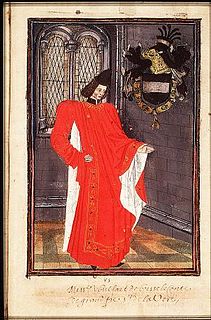
Wolfert VI of Borselen was stadholder of Holland, Friesland and Zeeland, Admiral of the Netherlands outside Flanders and Lord of Veere.
Hugh III, Lord of Broyes was Lord of Broyes at the end of the 11th century. He was the son of Simon I of Broyes and his wife Félicité de Brienne, daughter of Erard I, Count of Brienne.

Charles II of Lalaing was Count of Lalaing, Lord of Escornaix and stadtholder of the County of Hainaut.
Emanuel Filibert van Lalaing was a noble and army commander from the Low Countries.

Lalaing is a noble family from the south of Flanders which played an important role in the history of the County of Hainaut and of the Netherlands.

Philippe de Toucy was a French Crusader nobleman.

Simon Rodriguez de Evora, 1st Baron of Rode was a Flemish nobleman.
The Malcontents in the context of the Eighty Years' War or the Dutch Revolt were a faction of Catholic nobles in Hainaut and Artois who openly opposed William the Silent, also known as Orange, the leader of the States General of the Netherlands in the Union of Brussels of the Habsburg Netherlands during the period after the adoption of the Pacification of Ghent. They formed the Union of Arras in January 1579 and negotiated a separate peace with the Spanish Crown, represented by the royal governor-general Alexander Farnese, Duke of Parma, in the form of the Treaty of Arras (1579), signed on 17 May 1579.



